|
TennisOne Lessons The Swinging Topspin Volley The When, Where, and How of the Offensive Swinging Volley David W. Smith, Senior Editor TennisOne As the “Modern Game” of tennis continues to evolve, variations, adaptations, and, quite frankly, experimentation dictate the changes we are seeing in the game.
While several of today’s more modern techniques could be seen among players as far back as fifty years ago, examples of that era were hardly widespread nor widely accepted as they are today. I'm speaking of severe grips, two-handed strokes, and heavy topspin shots. Today, those strokes and techniques are commonplace. But, unlike the shots of yesteryear, the offensive nature of today’s game is something that simply was not thought of, nor was it trained for back in the day. The attacking mind set of today’s players demonstrates an almost “If I don’t kill you now, you’re going to kill me with the next shot,” mentality. And, quite frankly, given the opening, today’s pros are certainly going to exploit that opportunity. The swinging topspin volley, I believe, is an offspring of this mentality. In years past, a slower, higher volley, hit from a deeper position on the court, would have been hit as a conventional high volley; sort of the short, slightly blocking, slightly slicing volley that was the mainstay couple generations ago. With the offensive power that players on the baseline possess, volleys of that ilk are simply not offensive enough to create an opportunity to win points at the net. Players can run down such balls with ease and then crush a passing shot down the line, flick an angled crosscourt, or deliver a massive topspin lob, all of which make defending the net difficult if not a downright low percentage strategy.
At the club level, players can still play the conventional volley in this situation because it is unlikely they will be faced with the offensive firepower touring pros can unleash on a routine basis. However, as players progress and reach higher levels of skill, they will, of course, be facing opponents with higher levels of skill themselves. Thus, the need for more aggressive strokes to counter act more powerful returns becomes a prerequisite for improvement. In this article, I will talk about the swinging topspin volley, a shot that any player above 4.0 will want to consider learning and employing in his or her game. How? The swinging topspin volley is, essentially the same stroke as any topspin groundstroke. The difference, obviously, is that the ball is taken out of the air instead of bouncing as is done with a conventional groundstroke. The grip, the preparation, and the swing pattern are all the same. Early preparation and quicker footwork is important as the player does not have the luxury a bouncing the ball which most likely would give them more time to set up.
As you move in to attack a floating forehand or backhand volley, the swinging volley starts with the racquet held in whatever topspin grip you use. I suggest using a more compact backswing when you first work on the timing and control of the shot. However, over time, players will develop a feel for the swinging volley similar to that of a good overhead. That is, the shot will be hit with rhythm and timing, not tentatively with a careful swing pattern but attacked aggressively. Tentativeness will usually result in the player steering the ball and not hitting with significant topspin or speed to make the shot effective, let alone in. As you move into the shot, the swing is low to high, even on a high ball. Staying sideways, especially on the backhand is important and this is facilitated by stepping in at contact with the lead foot. For a two-handed stroke, (forehand or backhand), you will find the same key position points in both the two-handed groundstroke and the two-handed swinging volley. These points include:
With a one-handed forehand, the swinging volley should be hit with a more compact stroke than the fully loaded topspin groundstroke. Because the player is usually moving into the ball, the additional body weight or inertia will provide significant pace and momentum to the shot. The backswing is usually shorter and the stroke is hit with a good amount of topspin, as demonstrated in these clips by each player that emphasize the upward swing path. With a one-handed backhand, the topspin volley is often difficult to control for most players. Even at the pro level, you rarely see a full-on one-handed swinging topspin volley. I suspect that this is because it is not practiced regularly as with the forehand. The reason might be because If a ball is floating towards a player, the player will usually have time to run around the ball and hit his/her strongest shot, the forehand. It is important too, not to let the back leg swing around the body during the swing. Just as with the groundstroke, there is a clear holding back of the back leg, even a slight “kick back” of this rear leg at contact, then its release and subsequent step. Finally, as is the key to all good strokes, “keep the plane the same”. This simple phrase identifies the racquet face maintaining its integrity through contact. Don’t flip the racquet at the ball with the wrist, nor shall you want to roll the racquet face over the ball with an ‘open to closed’ racquet face. This pollutes the stroke and creates limited control as well as diminishes the opportunity to hit the ball consistently clean. Where? The most opportunistic place to hit the swinging topspin volley is when a player is moving forward, usually just behind the service line. However, a player can close in and take balls earlier than this too. An important point to consider is where, relative to the body, to make contact. The best areas are between the head and above the waist. Anything lower and the shot trajectory must be hit upward (to clear the net) and with this much speed and forward movement, even with the excessive topspin, the shot becomes exponentially more difficult to control. Any higher above the head and a player should be able to hit a conventional overhead by simply bending the knees to get the body in position to hit an overhead with the correct motion.
Because the player is making contact above the net height, the trajectory can be fairly flat or angled slightly downward. However, because the stroke pattern tends to close the racquet face, players must be conscious of hitting the swinging volley into the net when first learning the shot. If the player focuses on hitting a level shot, which is on the same line parallel with the ground, the spin fabricated with the swinging volley is usually enough to bring the ball down into the court. Obviously, players will need to practice their aim as with any shot, to determine the right trajectory for the speed, spin, and depth of the shot they are working on. Hitting a sharper angle volley will require more spin as the player will run out of court faster on angles than when hitting to the deep corners. When? As mentioned, the shot is best hit when a player is moving forward, usually attacking a weak ball that is floating deeper than a ball that could be easily bounced first. The point is time: by moving in and taking a slower, floating ball out of the air, you take time away from your opponent. If you were to let this same ball bounce, your opponent will have time to recover and cover his or her open court. The ball should be hit when it is dropping. This gives you more topspin than a ball that is rising or that is traveling on a flatter trajectory when you hit it. But, be careful not to let the ball drop out of the ideal hitting zone. Many junior players tend to do this, being lazy with the feet and yet, still attempting the swinging topspin volley. Players must learn when to change to a conventional volley when the situation is not ideal for the swinging topspin volley.
Be Careful! One of the problems when players discover this shot is they swing rather wildly. It is important to stay relatively sideways through contact and not try to swing your whole body into the shot. Also, it is important to keep your wrist locked and not let the swing get too whippy. Because the shot is usually hit with the player moving forward with a lot of body weight being transferred into the shot, players don’t have to swing excessively hard to still get good pace on the shot. Conclusion While it will be tempting to turn a lot of balls into these swinging volleys, there are many situations that will dictate a more conventional volley or overhead. For most pros, because they work so much on their ground game, the swinging topspin volley is simply a more comfortable and more consistent stroke for them. Recreational players must understand this; if you don’t have solid groundstroke techniques, the swinging volley will be even less consistent and less effective. However, if you do possess a good ground game, then the door is open to explore the swinging topspin volley as another weapon in your arsenal! Your comments are welcome. Let us know what you think about Dave Smith's article by emailing us here at TennisOne .
|
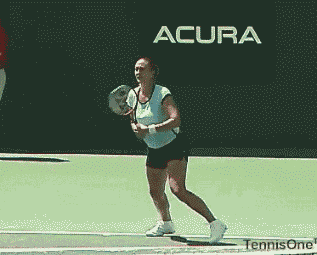
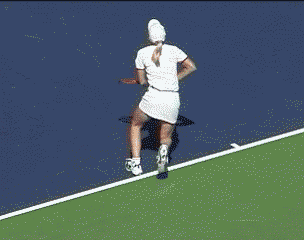

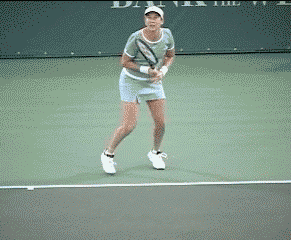
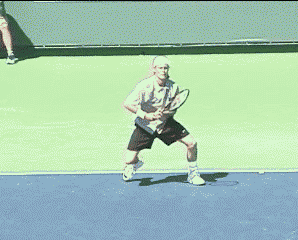
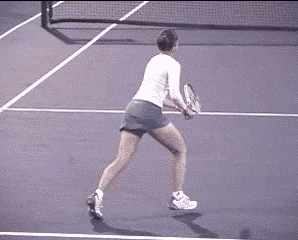
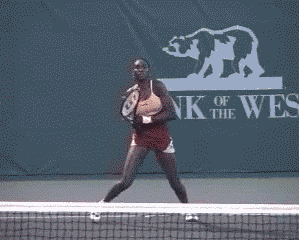

 Your comments are welcome. Let us know what you think about this article by
Your comments are welcome. Let us know what you think about this article by